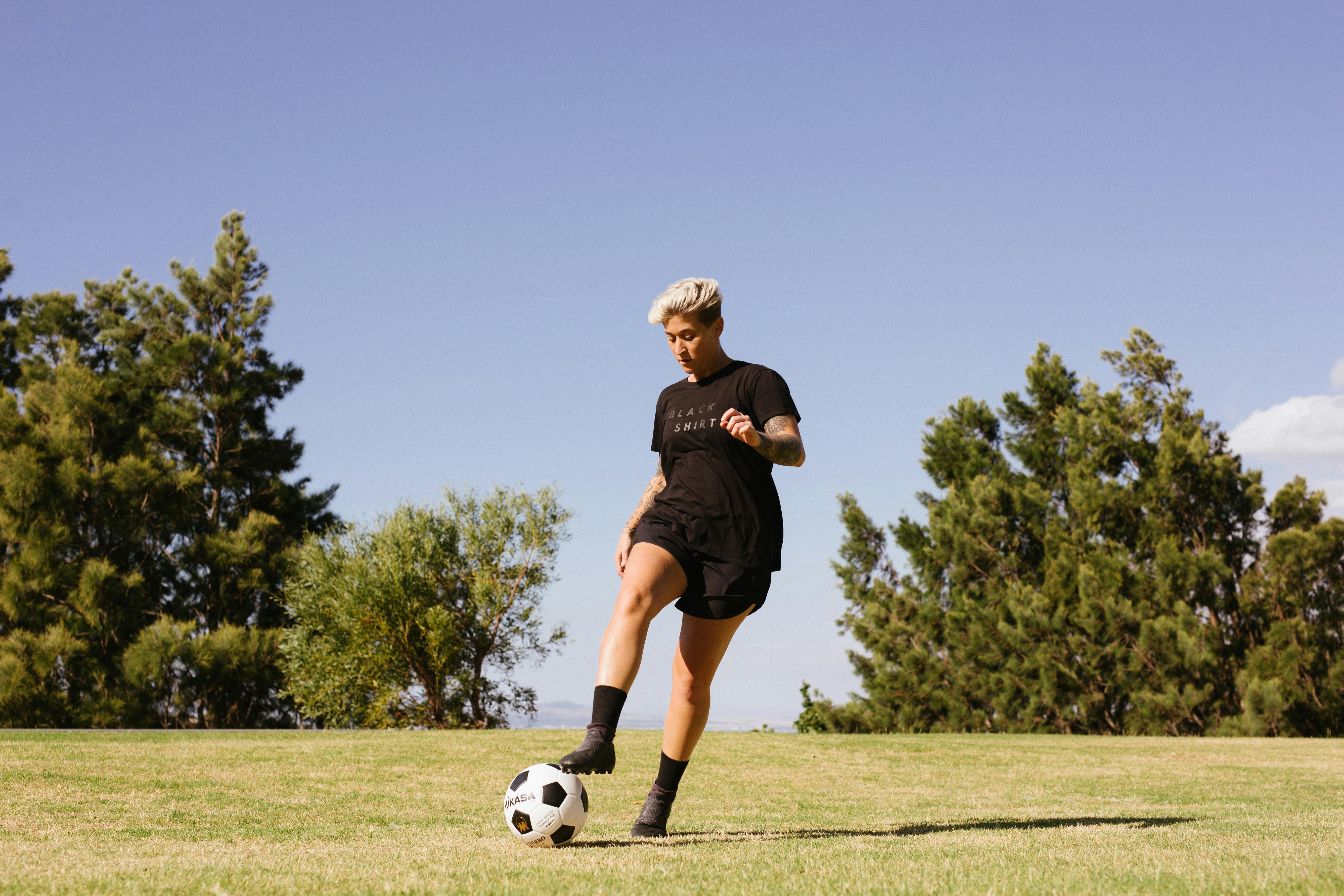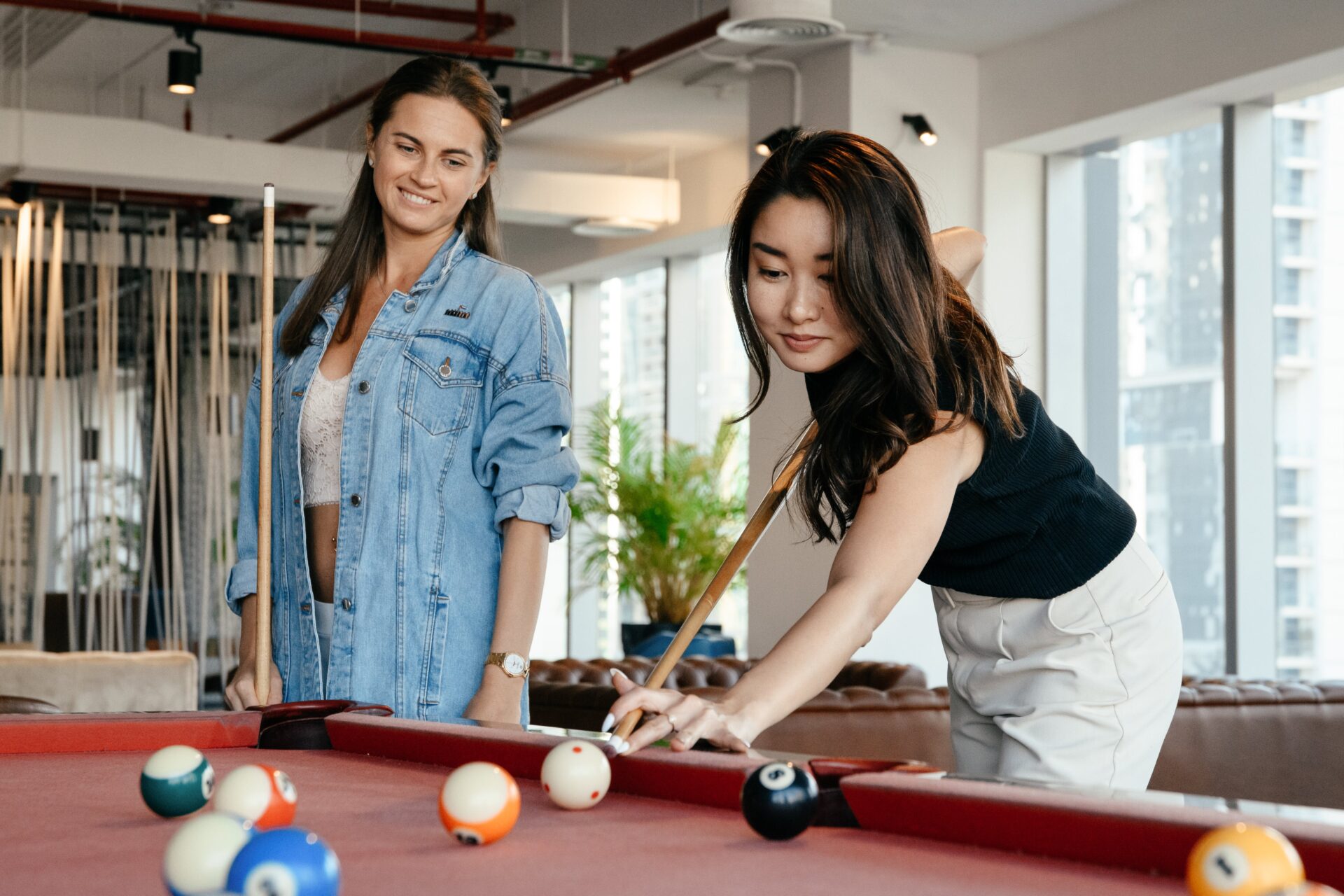Hitting a cue ball correctly is an essential skill for any pool player. Whether you are playing 8-ball, 9-ball or another game, the cue ball needs to be struck with precision and accuracy in order to make a successful shot. In this guide, you will learn the basics of how to hit a cue ball correctly so that you can become a better player and excel at the game of pool.1. Keep your grip loose: Make sure your grip is relaxed while holding the cue stick, as a tight grip can lead to inaccurate shots.
2. Aim for the center of the ball: Aim for the center of the cue ball when you hit it. This will help you maintain control and accuracy as you take your shot.
3. Watch your follow-through: After making contact with the cue ball, follow through in one smooth motion to ensure a consistent trajectory and speed of the cue ball.
4. Use a bridge: Use a bridge to support your cue stick when taking shots from difficult angles or positions that require more precision and accuracy.
5. Adjust your stance: Make sure you are standing in a comfortable position that allows you to move freely and accurately aim for the ball.
Learning the Basics of a Cue Ball Strike
The cue ball strike is a fundamental skill in billiards, and mastering it is essential for becoming an advanced player. A good cue ball strike can increase your chances of pocketing the object ball, and it can also be used to set up trick shots. Knowing how to make a proper cue ball strike is important if you want to become a skilled billiards player.
The most important part of making a good cue ball strike is to make sure that the tip of your cue stick makes contact with the base of the cue ball. This will ensure that the ball will go in the direction that you want it to travel. You should also aim for the center of the cue ball when striking it, as this will give you more control over where it goes. Additionally, make sure that your follow-through is in line with your intended direction so that you don’t accidentally send it off course.
When you are setting up your shot, take into account any obstacles that might prevent you from executing a perfect strike. If there are any obstructions between you and your target pocket, then you may need to adjust your technique accordingly. You may need to hit harder or softer depending on how much space there is between you and the pocket.
Finally, practice makes perfect when it comes to learning how to make a good cue ball strike. Spend some time practicing in order to get comfortable with different angles and techniques for different shots so that you can become an expert at making clean pool shots. With enough practice, anyone can master the art of making perfect strikes every time!
Understanding the Right Technique for Striking a Cue Ball
Striking a cue ball correctly is an important part of playing pool, and it’s critical to understand the right technique for achieving the desired result. The correct stroke should be smooth and consistent, with a steady, controlled motion that allows for maximum accuracy and control. To properly hit a cue ball, start by holding the cue stick with your dominant hand, gripping it firmly at the base. Next, rest your other hand on the table to help support your arm and provide stability during the shot. Position yourself so that you are facing the ball at an angle of approximately 45 degrees. Once in position, use your dominant hand to move the cue stick forward in a straight line towards the ball. Make sure you keep your aim steady and try to hit the center of the cue ball for optimal accuracy. Follow through with your stroke after you make contact with the ball and keep your arm moving until it naturally comes to rest at its normal position. With practice and patience, you can master this technique and become a more accurate player.
By understanding how to properly strike a cue ball, you can significantly improve your game play and increase your chances of winning. It takes time to master this skill but once you understand how it works, you can become an expert in no time!
Practicing Different Strokes
Hitting the cue ball is a key skill in any game of pool. To become a successful player, it is important to be able to use a variety of strokes. There are several different types of stroke that can be used when hitting the cue ball; each with its own advantages and disadvantages.
The most common type of stroke is the standard stroke, where the cue stick is held in a vertical position and the cue ball is struck with the tip of the stick. This type of stroke provides good control over where the ball goes, but it can be difficult to achieve power with this technique.
Another popular stroke is the draw stroke, where the cue stick is held at an angle and the tip of the stick strikes slightly below center on the cue ball. This type of stroke allows for greater power and accuracy when hitting shots that require backspin on them.
The follow-through stroke is also very effective when aiming for specific targets. In this case, after striking the cue ball, you continue your follow-through motion until your arm stops moving forward; this helps ensure that you hit with consistent power and accuracy every time.
Finally, there are several specialized strokes that are used for specific shots in pool such as jump shots and masse shots. These shots require specialized techniques that must be practiced in order to become proficient at them; if done correctly, they can help you win games quickly and easily.
In conclusion, practicing different types of strokes when hitting the cue ball can help any pool player improve their overall game and become more successful in tournaments or casual games alike. With enough practice and dedication, any player can become an expert at using these various strokes to their advantage!
Choosing the Right Cue Stick for Striking a Cue Ball
Selecting the right cue stick is essential for a successful game of billiards. A cue stick should be comfortable to hold and easy to maneuver. It should be fitted with the right tip size and weight for the player’s individual needs. The shaft of the stick should be made of quality materials that will not warp or crack over time.
When choosing a pool cue, players should consider their skill level as well as their budget. Beginners should look for a less expensive model that is lightweight and has a smaller tip size. This type of cue will provide more control over shots and help prevent mis-hits. More experienced players may opt for heavier models with larger tips that allow for more power shots.
The material used to make the shaft is also an important consideration when selecting a cue stick. Hardwoods such as maple or hickory are traditional materials used in pool cues, but graphite and fiberglass are becoming popular due to their durability and strength. The material used in the butt end should also be taken into account, as it can affect balance and general playability of the stick.
When looking at different models, it’s important to pay attention to details such as joint types, wrap materials, and decorative elements like inlays or accents. These features can add style points as well as additional weight or balance to the stick, which can improve performance on certain shots or provide more comfortable playing conditions for different users.
Choosing the right cue stick is an important step in becoming a successful pool player. With so many options available on today’s market, players are sure to find something that meets their individual needs and budget requirements. By taking into account factors such as skill level, material quality, and design features, players can select a cue stick that is sure to bring success at every game of billiards they play!

Master the Art of Aiming at the Target with a Cue Ball
Having a good aim when aiming at the target with a cue ball is an essential skill in the game of pool. It’s important to understand the various techniques and strategies that can help you refine your aim and become more accurate. The following tips will help you master the art of aiming with a cue ball.
First, develop an understanding of basic geometry. Knowing how to use angles and lines to calculate trajectories and distances can help you determine the best way to hit your target. You may also want to learn about how different surfaces affect the motion of a ball, such as carpet versus wood or smooth versus textured. This knowledge can help you adjust your aim accordingly.
Second, practice makes perfect. Spend time on the pool table honing your skills and learning to hit shots accurately. Pay attention to how different shots affect the trajectory of the cue ball, and learn which ones are most effective for specific situations. You should also practice shooting from various angles so that you can become comfortable aiming from any position on the table.
Third, use visual aids for guidance when aiming at targets. You can use chalk marks on either side of your intended target to create a focus point that will guide your shot in that direction; this is especially helpful when shooting from difficult angles or long distances. Additionally, some players find it useful to draw imaginary lines with their cue stick in order to visualize their desired path before taking their shot.
Finally, take some time to analyze your shot after it’s been completed. Evaluate what went right or wrong with each attempt, and make adjustments accordingly for future shots if necessary. With enough practice and observation, you should be able to develop an accurate aim with a cue ball that helps improve your overall game performance!
Establish a Good Grip and Stance for Striking a Cue Ball
Having a good grip and stance is essential to executing a successful shot when playing pool. To ensure maximum accuracy, it’s important to make sure your entire body is in the correct position before striking the cue ball. With the right posture and stance, you can easily maintain control of your shots, increase power, and improve accuracy. To start, hold the cue stick firmly in your dominant hand with your thumb facing up. Place your other hand on the butt of the stick for stability. Your elbows should be bent slightly and close to your body with your feet shoulder-width apart. When you take aim, make sure to keep your eyes level with the cue ball while keeping your head steady. This will help you achieve an accurate shot every time while allowing you to maintain control over your shots.
Once you have established a good grip and stance, you are ready to begin striking the cue ball. Make sure that you are using a smooth stroke when hitting the ball. A jerky or abrupt motion can disrupt your aim and throw off your shot completely. Take special care not to move either of your hands too far away from their original position as this can also affect accuracy. When done correctly, having an effective grip and stance will help you achieve better accuracy when playing pool and ultimately improve your game overall.
Develop Consistency in Your Stroke
The most important aspect of becoming a better player is developing consistency in your stroke. This means you should practice the same shot over and over, making small adjustments as you go. This will help to eliminate any inconsistencies that may arise from using different techniques for each shot. You should also ensure that you are applying the same amount of force to each shot, as this will help maintain accuracy and power.
Focus on Aiming
Another important factor to consider when improving your power and accuracy when hitting cue balls is aim. Being able to accurately set up a shot and focus on where you want the ball to go is essential for success in pool. Practicing aiming drills can help improve your focus and accuracy, and can also help build muscle memory so that you can more quickly determine the best shots without having to think too much about it.
Utilise Body Mechanics
Using proper body mechanics is crucial for success in pool. This includes using proper posture, foot placement, grip, bridge hand position, and stroke technique. Proper body mechanics not only helps with accuracy but also with power. When done correctly, body mechanics can provide more fluidity and control in your strokes which will lead to improved power and accuracy when hitting cue balls.
Learn How to Spin the Cue Ball
Learning how to spin the cue ball is an important skill when it comes to becoming a better pool player. Being able to apply spin on the cue ball gives you more control over its trajectory, allowing you to make more accurate shots with greater precision. Learning how to spin the cue ball takes practice so it’s important that you spend time honing this skill if you want to improve your power and accuracy when hitting cue balls.
Practice Regularly
Finally, practicing regularly is essential for improving your power and accuracy when hitting cue balls. Setting aside time each day or week for practice will allow you to work on specific techniques as well as general game play skills such as positioning yourself around the table or reading your opponents’ shots accurately. The more time spent practicing, the better chance you have at becoming a better player overall!

Conclusion
Hitting the cue ball correctly is an important skill to master if you want to excel at billiards. It requires you to position your body, the cue, and the cue ball properly and then use a smooth, consistent stroke to deliver the desired amount of power. While it may take some practice, once you get a feel for how to hit the cue ball correctly, you will be able to make shots with much more accuracy and consistency.
Remember that practice and patience are key when it comes to mastering this skill. Take your time, focus on your form, and keep practicing until you get it right. With enough practice, soon you’ll be hitting the cue ball like a pro!




